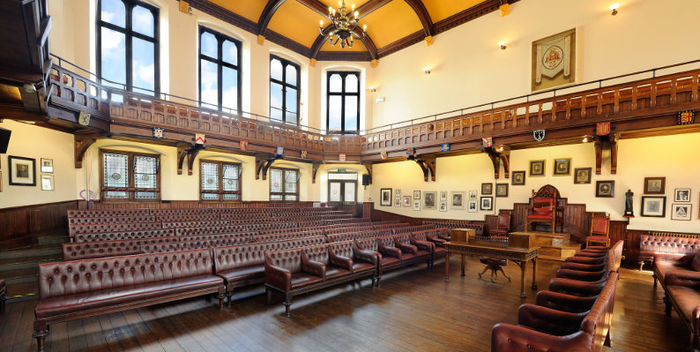Streamed theatre: friend or foe of live performance
Vee Tames explores the benefits and drawbacks of streamed theatre both today and in a post lockdown world.

I’m writing this article on a Thursday. As it stands, Thursday is a good day for theatre lovers. Thursday is a good day because Thursday is National Theatre at Home Day. From the 2nd April, the National Theatre has streamed well-known productions on YouTube from its archive every week.
The National is not the only venue to turn to streaming both as a means of retaining audiences and to attract donations, as they try to minimise the economic damage caused by COVID-19. The Hampstead Theatre has streamed a production every week via its Instagram account, while the Royal Opera House has been uploading archived opera and ballet productions for your viewing pleasure. For musical theatre fans, Andrew Lloyd Webber is uploading one of his shows to YouTube for 48 hours every week as part of a series called The Shows Must Go On.
Streaming shows has transformed our relationship with live performance, opening up more opportunities to engage with the arts than ever before. 209,000 households tuned in to watch the premiere of the National Theatre’s stream of One Man, Two Guvnors - over 18 times the capacity of its venue, the Olivier Theatre. And that is only counting UK audiences. One of the joys of streamed performances is that audiences can come from all over the world to enjoy a production that might otherwise be out of reach due to cost or location. There is also the hope that the more theatre people are exposed to, in whatever format, the more theatre they will want to engage with.
To put it simply, it makes live performance not really ‘live’ at all
Audiences are not the only ones that benefit. Any actors and crew involved get paid extra for the screenings through royalties – although industry figures such as Phoebe Waller-Bridge have waived these for their recent streams in addition to donating ticket funds to various UK charities.
Nevertheless, a live performance is an event. We make special arrangements (usually putting off an essay) to travel to a particular place to experience a narrative with a group of strangers simultaneously in real time. Even if we cannot attend a performance in the venue itself, and instead visit our local cinema, for example, we can still retain a fraction of that ‘liveness’, albeit at a distance.
Watching a live performance at home, however, blurs and ultimately removes the boundaries between public and private spaces. To put it simply, it makes live performance not really ‘live’ at all. Indeed, if you miss the initial streaming, you effectively miss the only ‘live’ performance of that stream since the only moment where the viewing is considered ‘live’ and can feel that way is thanks to the social media commentary. If you miss that, you can no longer participate, only consume. It is no longer a shared occasion.
Watching streamed performances has underlined for me how much being a viewer and being an audience member are separate experiences. I often wonder about the intended audience or the ‘prioritised audience’ for a live performance screening since performance for screen and performance for stage are distinct disciplines. Which audience receives the majority of the performers’ attention – the audience in the room or the unknown audience tuning in from across the world? How much of the performers’ work changes as a result of various cameras and microphones floating in the performance space?
We cannot allow virtual theatre to dissuade potential live-theatre goers across the country
Ill-considered shots impede the viewer’s experience in an attempt to recreate the experience of a film in a theatre, failing to appreciate that from a cinematography perspective at least: less is often more when recording a performance. I emphasise the word recording over filming. Streamed performances were initially archival, it is only now that the practice has been increasingly commercialised that ‘artistic’ choices have started to creep in. Close-ups during dance prevent you from seeing the entirety of the dancer’s body and appreciate the work of the ensemble. Ballet, in particular, loses its illusion of perfection if you have too many close-ups. Where you wanted beautiful lines and musicality, you get dripping sweat, endless hair pins, battered pointe shoes and bunion-ridden feet in 4K definition - a privilege that even a real front-row seat gets to avoid.
A fascinating study led by UCL has found that watching a live theatre performance can synchronise your heartbeat with that of other people in the audience, regardless of whether you know them or not. The physiological synchrony observed during the performance was strong enough to overcome any and all social differences and engage the audience as a whole. Even more surprisingly, experiencing a live theatre performance could stimulate your cardiovascular system to the same extent as a 28-minute workout. I doubt the same can be said for streamed performances at home but I welcome any future study that refutes this, if only to benefit my bank account.
The ease at which multiple venues have offered streaming of their work throws up a number of questions for the future of live performance in a post-lockdown world. It would be tragically ironic if theatrical juggernauts such as the National Theatre, the RSC and the Royal Opera House wipe out small-scale touring companies. We cannot allow virtual theatre to dissuade potential live-theatre goers across the country.
However, I suspect streamed productions won’t be upstaging the premium of live performance any time soon. They’re just not the same experience.
 News / SU reluctantly registers controversial women’s soc18 December 2025
News / SU reluctantly registers controversial women’s soc18 December 2025 Features / Should I stay or should I go? Cambridge students and alumni reflect on how their memories stay with them15 December 2025
Features / Should I stay or should I go? Cambridge students and alumni reflect on how their memories stay with them15 December 2025 News / Dons warn PM about Vet School closure16 December 2025
News / Dons warn PM about Vet School closure16 December 2025 News / Cambridge study finds students learn better with notes than AI13 December 2025
News / Cambridge study finds students learn better with notes than AI13 December 2025 News / CUP announces funding scheme for under-represented academics19 December 2025
News / CUP announces funding scheme for under-represented academics19 December 2025









